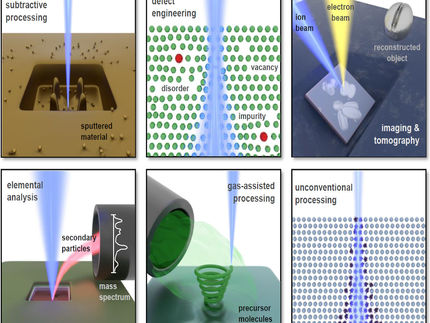Materials science: How molecular entanglements determine the structure of polymers
he new findings could help to improve existing materials or to replace them - either completely or in part - with more sustainable alternatives
Advertisement
The structure of semi-crystalline polymers largely depends on how strongly their molecular chains are entangled. This has been shown in a new study by researchers from Martin Luther University Halle-Wittenberg (MLU) which was published in the scientific journal "Proceedings of the National Academy of Sciences" (PNAS). Following numerous experiments, the researchers developed a new model to predict the microscopic structure of the materials as well as their properties. Polymers are long-chain molecules. Semi-crystalline polymers are a mixture of solid and liquid elements. They are often used in plastics and packaging materials.
When materials cool down, they usually form a crystalline structure at the molecular level, in other words, all the particles are in a tightly ordered pattern. "A similar process occurs when semi-crystalline polymers form, except that not all regions crystallise," explains physicist Professor Thomas Thurn-Albrecht from MLU. Instead, there are so-called amorphous regions that have a disordered structure after cooling. Here entanglements that are intertwined with one another are found. In semi-crystalline polymers, ordered and disordered layers alternate over and over on a nano-level. This special structure also gives them their unique properties: they are both flexible and elastic as well as being relatively robust. This makes them particularly suitable as packaging and structural materials.
The properties of semi-crystalline polymers largely depend on two factors: the thicknesses of the above mentioned layers and how strongly the chains in the amorphous regions are entangled. According to Thurn-Albrecht, the factors that influence crystal thickness are already well-known, yet knowledge about amorphous layers is still rather limited. His team investigated the process of crystal formation specifically for these layers in collaboration with a group led by professor Kay Saalwächter from MLU. Based on their measurements on a model polymer, the physicists discovered that the thickness of the amorphous layers is determined to a large extent by their entanglements. The researchers also developed a simple model to describe this relationship.
"We assume that our model can be applied to many different polymers. That includes materials that, at the moment, are not used very widely," says Thurn-Albrecht. The new findings could help to improve existing materials or to replace them - either completely or in part - with more sustainable alternatives.






























































